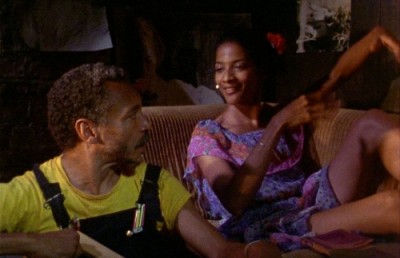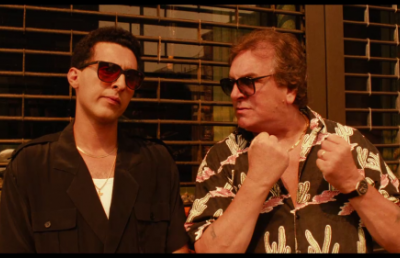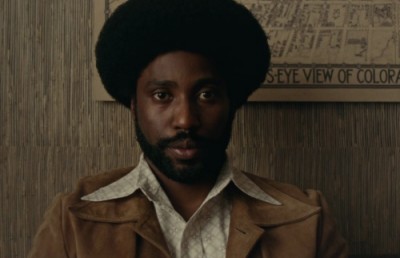Decoding the Politics of Hollywood Whitewashing through M. Night Shyamalan’s The Last Airbender
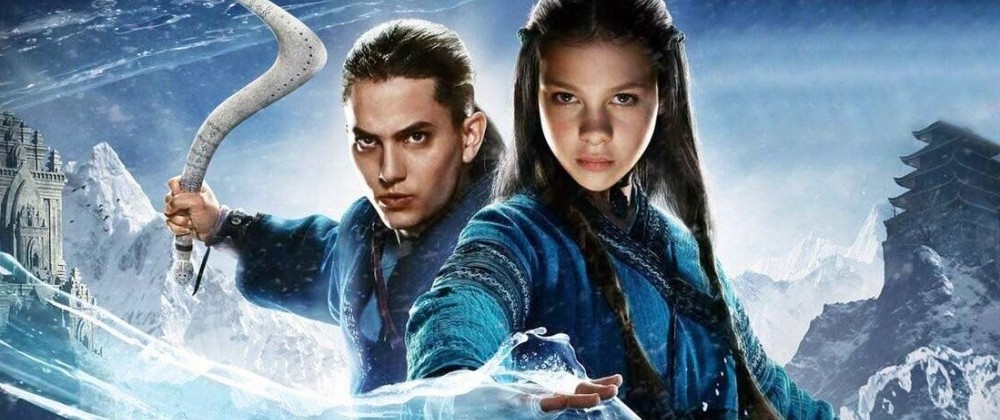
The Last Airbender is a 2010 action-adventure fantasy film directed by M. Night Shyamalan. The film, a live-action adaptation of the Nickelodeon animated series Avatar: The Last Airbender, became one of the most anticipated films of the decade in the wake of its official announcement. However, when news of the cast of the film was finally made public, the filmmakers were widely and severely criticized. The negative reaction stemmed from the filmmakers’ choice to whitewash the film’s cast.
Whitewashing refers to a casting practice in which film producers cast white actors into roles originally meant for people of colour. Several Hollywood films over the last two decades have faced criticism owing to their decision to whitewash characters. Popular examples include Ben Affleck directing himself playing an Hispanic character in the Oscar-winning Argo (2012); Angelina Jolie portraying a character which was originally African-American in the 2008 film Wanted (Timur Bekmambetov, 2008); and Johnny Depp being cast as a Native American in The Lone Ranger (Gore Verbinski). Similarly, The Last Airbender was accused of whitewashing, and its casting choices were panned by fans of the original show and film critics alike.
In this essay, I will look at how the whitewashing of characters in The Last Airbender reinforces orientalist ideas and that the casting of white actors as heroes and brown actors as villains pushes the film to perpetuate a system of othering that not only uses the categories of “white” and “colour” as binary opposites, but also links it with the concepts of Good and Evil. This glorifying of whiteness and vilifying of colour affects the understanding of the Occident and the Orient, and the lives of the people who identify with these cultures.
The Whitewashing Problem in The Last Airbender
There is a widely accepted notion in the Western entertainment industry that “white” is the default race. Most of the characters in films, books, and television shows generated in the West are white people. Typically, characters of colour in these narratives are examples of token representation. There is a tendency for these characters to fit into popular stereotypes and they are often marginalized with flat and uninteresting character arcs (Nelson 03). Nickelodeon Animation Studio’s Avatar: The Last Airbender, was a show that broke this mould. Notable for being heavily influenced by Eastern Asian art, culture, and mythology, the show garnered worldwide critical acclaim and popularity for telling a story that was free of anything Occidental.
Avatar: The Last Airbender, the animated series on which the film is based, is set in a world where human civilization is constituted of four cultural formations or communities. These communities, each of which is named after the classical elements, are the Water Tribes, the Earth Kingdom, the Fire Nation, and the Air Nomads. Each faction consists of people called “benders” who possess the ability to “bend” or telekinetically control and manipulate the element that corresponds to their faction.
The Avatar is a title given to the person who is born with the ability to bend all four elements. The Avatar has to maintain balance and harmony in the world and act as a mediator between humans and spirits. The Avatar is born into one of the factions in a sacred sequence called the Avatar Cycle: Fire Nation, Air Nomads, Water Tribes, and finally the Earth Kingdom. There is only one Avatar in every generation, and once the Avatar dies, he or she reincarnates in a new body, into the next nation in the Avatar Cycle. The series follows the trials, tribulations and adventures of Aang, the current Avatar, who has to usher in an era of peace in a world marred by war and strife. The Last Airbender is based on the first season of the show, referred to as Book One: Water. The film whitewashes several characters from the show without paying any attention to the cultural context of these characters.
Aang, the protagonist of the series, is an Air Nomad. The Air Nomads are modelled after Tibetan Buddhist culture. This is reflected in their attire, practices, and lifestyle. However, in the film, Aang is portrayed by Noah Ringer, a white American actor. While the characterization of Aang in the film varies slightly from that of the series, his core characteristics remain the same. Aang is kind and compassionate, and is destined to be the saviour of the world. There is a sequence in the film where Aang visits the ruins of an Air Temple, and we see flashbacks of the place from before the genocide of the Air Nomads. What makes Aang’s whitewashing jarring is the fact that the other monks of the temple are portrayed by non-white actors, and in their midst, Aang stands out as a “white” boy.
Aang – In film (left) and series (right)
The next example of whitewashing is the portrayal of the characters Katara and Sokka. Together with Aang, Katara and Sokka constitute the trio around whom the narrative of the series is built. Katara and Sokka are siblings who belong to the Southern Water Tribe. The Water Tribes are modelled on the Inuit peoples. In the series, these characters have a dark complexion. In the film, however, these characters are also portrayed by white actors, Nichola Peltz as Katara and Jackson Rathbone as Katara’s elder brother, Sokka. The defining traits of these characters are that they are helpful, intelligent, resourceful, and brave. They take it upon themselves to protect and aid the Avatar in his quest to save the world.
Katara and Sokka are not the only Water Tribe people who are whitewashed. Princess Yue, leader of the Northern Water Tribe and Sokka’s romantic interest, is played by Seychelle Gabriel, another white actor. Yue becomes a significant character in the story and meets a tragic end when she chooses to sacrifice herself to save her tribe and the balance of the planet. Another important character is Zuko, the banished prince of the Fire Nation, whose society is based on that of Imperial Japan. Zuko is a cruel, cold, and violent person whose only goal in life is to capture the Avatar in order to regain his lost honour in the eyes of his father, Fire Lord Ozai. Zuko is everything that Aang is not. In the film, Dev Patel, a non-white actor, plays Zuko. There is also Fire Lord Ozai’s brother and Zuko’s uncle, Iroh, a famous General known for his strategic brilliance and legendary firebending prowess. He is wise and kind, and is often seen giving essential life lessons to Zuko. A far cry from the evil Ozai, Iroh is a paragon of virtue. In the film, Iroh is played by Shaun Toub, an Iranian-American actor. Admiral Zhao, the film’s primary antagonist, is played by Aasif Mandvi, a non-white actor. Zhao is a ruthless and cruel Fire Nation military leader who is in pursuit of the Avatar. He is known for his brutal war tactics and his obsession for power. He is Zuko’s rival and is always willing to go to any extent to prove his superiority to Zuko.
The Implications of the Whitewashing
By whitewashing selected characters in The Last Airbender participates in Orientalism, which can be understood as how the West perceives the East as exotic and seductive, which is of course a gross and reductive generalization. The Orient is a European defined as “a place of romance, exotic beings, haunting memories and landscapes, remarkable experiences” (Said 9). Orientalism as a way of thinking generally involves the West identifying the Orient as the “other.” The Orient was conveniently imagined as everything the Occident was not. This dichotomy between East and West plays out at multiple levels in the film’s narrative.
In The Last Airbender, white actors have been cast in positive roles while their antagonists and other malicious characters are all people of colour. For example, Aang (whose actual ethnicity should be Tibetan), Katara and Sokka (originally Inuit) are all played by white actors, while Zuko (the anti-hero of the story) and Admiral Zhao are played by people of colour. Even Zuko’s uncle Iroh, another positive character, who should logically have the same ethnicity as Zuko, is played by a white actor. Characters like Aang, Katara, and Sokka are given sequences wherein they are shown rescuing innocent people from the bad guys, mounting resistance against injustice, and inspiring people to find the strength to fight for what is theirs. Conversely, a majority of the sequences involving Zuko and Zhao follow the characters scheming. Zuko is always focused on defeating and capturing the Avatar, and Zhao primarily wants to besiege the capital of the Northern Water Tribe to kill the moon spirit and bring the Water Tribe under the Fire Nation’s dominion.
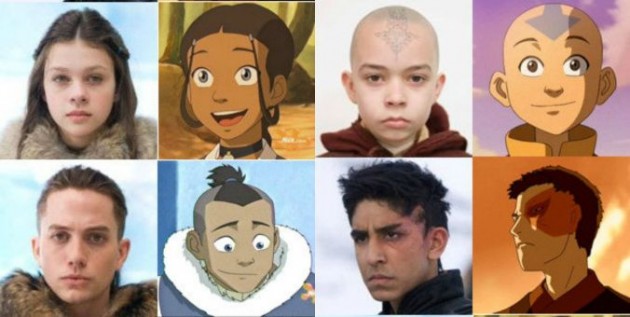
Sokka, Aang, Katara, and Zuko in film and series
There is also a sequence involving a farmer from the Earth Kingdom who lures Aang into the Northern Air Temple and betrays him, which leads to Zhao capturing the Avatar. The Earth Kingdom is modelled on the federal monarchy of China, and this time the character is not whitewashed and is played by an Asian actor. An overtly negative character characterised by treachery and greed is portrayed by an actor of colour. The trope of a “duplicitous and untrustworthy Oriental man”, common in Hollywood films, resurfaces in this sequence (Zhang 321). Through such representations, “white” becomes a marker for goodness, honour, dignity, courage, integrity, and strength, while “colour” becomes a marker for evil, dishonour, immorality, indecency, and violence. This is problematic because it furthers the Orientalist notion of perceiving the East as a land of moral and cultural depravity, a dark and unregenerate counterpart of the West.
Apart from eliminating opportunities for actors of colour, whitewashing has other negative consequences. One of these is perpetuating the idea of white superiority. When filmmakers continually cast white actors in favour of actors of colour, they reinforce the notion that white actors are the “better” choice. Since white actors have historically been dominant in Hollywood, they are often perceived as the preferred standard. Consequently, people of colour are deliberately given less appealing roles and often overlooked or replaced by white actors within a story (Starling 3-4). Also, the body erasure that such whitewashing participates in influences how the audience constructs and perceives body images. It is difficult to live in a world that perceives one’s body and skin as undesirable (Nelson 07). Whitewashing perpetuates, either directly or indirectly, the demented notion of light skin being “good” skin and dark skin being “bad” skin. Selective whitewashing, as in The Last Airbender, leaves little room for misinterpretation.
The original animated series is set in a world where there is no trace of the Occident or its culture. Through a narrative that is purely rooted in Oriental philosophy and culture, Avatar: The Last Airbender succeeds in offering a powerful critique of colonialism, imperialism, genocide, and the evils of war (Vishwanath 29-30). However, because of the selective whitewashing in The Last Airbender, the film ends up reiterating the white saviour narrative instead. Aang is the Avatar destined to usher in an era of peace in the world and the prophesied saviour that all victims of the Fire Nation’s expansionist regime await. When Aang becomes a white character, the role of a saviour that was initially meant for someone of colour is occupied by the white man. The Last Airbender ends up reinforcing the age-old notion of the white man saving the world against all odds and showing non-whites the right way forward.
The white saviour narrative is also dramatized in a sequence involving Princess Yue. Admiral Zhao kills the moon spirit and, as a result, the Waterbenders lose their ability to bend water. Just when all seems lost and the Fire Nation soldiers are gaining the upper hand in the final battle, Yue decides to sacrifice herself so that the moon spirit could be revived. Yue’s sacrifice bears fruit, and the Waterbenders manage to repel the Fire Nation forces. Yue, originally a character of colour, is whitewashed and becomes a beacon for courage and sacrifice. Aang and Yue become white symbols of virtues like bravery, courage and sacrifice, while characters like Zuko and Zhao are reduced to caricatures of Oriental warmongers. The film has several sequences where Aang, Katara, and Sokka are seen fighting Zuko and Zhao. In every instance, Aang and his team display exemplary skills and finesse in battle despite their opponents being more seasoned warriors. They prove to be superior to Zuko and Zhao, often forcing these characters to retreat. Fight sequences between the two sides are handled differently in the original series and the film. In the series, Aang and his friends almost always find themselves in a tight spot with Zuko and Zhao, and it is only by teaming up or due to some lucky plot intervention, such as a wall crumbling or a bridge collapsing, that they succeed in repelling their foes. In the film, however, the superiority of Aang and his team is always evident.
Such a representation is used to demonstrate the inferiority of characters of colour even within their own cultural contexts. There is a frequently used demonstration of superiority observable in Hollywood films, where the white character comes to possess enough skill, mastery, and recognition to displace his or her counterpart of colour. This reinforces Western hegemony by “producing the East discursively as the West’s inferior ‘Other’, a manoeuvre which strengthens – indeed, even partially constructs – the West’s self-image as a superior civilisation” (Tierney 614). This relegates non-white cultures to an inferior status in relation to the dominant white race, which is one of the core features of Orientalism.
Conclusion
Not only does the whitewashing of characters in a film create a lack of minority representation and opportunities, but it also creates an issue of self-identity and self-worth for viewers of colour. According to Social Identity theory, group membership plays a vital role in one’s self-concept. People are strongly motivated to maintain a positive self-concept and thus tend to favour groups they are a part of and discriminate against other groups (Weaver 370). This suggests that a continued preference by film companies for white actors creates a scenario of positive self-esteem for viewers who relate to or identify with being “white”. On the other hand, those people who are not white do not gain the same sense of positive self-esteem, simply because they do not see themselves adequately represented in popular media (Starling 06). Communities of colour end up without any role models or positive figures from their communities to look up to and identify with as a result of such whitewashing. This creates an ethical and moral issue, the effects of which non-white communities experience every day.
The oversimplified and reductive representations of people from and conditions of the Orient is a common sight in the Hollywood landscape. Innumerable films have followed similar approaches and have contributed to the creation of a skewed understanding of the Orient in the minds of Western audiences (Nicha 4). It is images of this kind that continue to be perpetuated by whitewashing. It is crucial to identify cinematic Orientalism in order to nurture a discourse built on inclusivity and appreciation for differences and diversity rather than choosing to look at differences in other cultures and spaces with contempt.
Select Bibliography:
Nelson, Kai. “Where’s the Representation? The Impact of White Washing on Black Children.” Academic Symposium of Undergraduate Scholarship (2016), pp. 01-10. https://scholarsarchive.jwu.edu/ac_symposium/35. Accessed on 05 November 2020.
Nicha, Julijana. “Orientalism and Post-colonialism: Depicting Arab Imagery in Hollywood Movies.” 2012, Academia.
Said, Edward W. Orientalism. Routledge & Kegan Paul Ltd., 1978.
Starling, Clair. “Whitewashing in the U.S. Film Industry.” Continuum, Vol. 07 (2020), pp. 01-09. https://www.uis.edu/caphonors/wp-content/uploads/sites/17/2020/04/Whitewashing-in-the-U.pdf. Accessed on 25 November 2020.
Tierney, Sean M. “Themes of Whiteness in Bulletproof Monk, Kill Bill, and The Last Samurai.” Journal of Communication, Vol. 56, No. 03 (2006), pp. 607–624. Wiley Online Library, doi:10.1111/j.1460-2466.2006.00303.x
Vishwanath, Gayatri. “Power and Resistance: Silence and Secrecy in Avatar: The Last Airbender.” SubVersions, Vol. 02, Issue.1 (2014), pp. 26- 47. http://subversions.tiss.edu/?p=385. Accessed on 05 November 2020.
Weaver, Andrew J. “The Role of Actors’ Race in White Audiences’ Selective Exposure to Movies.” Journal of Communication, Vol. 61, No. 02 (2011), pp. 369–385. Wiley Online Library, doi:10.1111/j.1460-2466.2011.01544.x.
Zhang, Xiaoqun. “Business, Soft Power, and Whitewashing: Three Themes in the US Media Coverage of The Great Wall film” Global Media and China, Vol. 02, Issue 03-04, pp. 317-332 (2017). Sage Journals, doi: 10.1177/2059436418755532
Filmography:
The Last Airbender. Directed by M. Night Shyamalan, performances by Noah Ringer, Dev Patel, Nichola Peltz and Jackson Rathbone, Paramount Pictures, 2010.
Avatar: The Last Airbender (Michael Dante Di Martino & Bryan Konietzko, 2005-2008, TV)



